Manufacturers have been using 3D modelling systems for decades, but the construction industry is only now catching up. With the UK government’s mandate that all centrally procured public sector construction projects be delivered using building information modelling (BIM) by 2016, and similar targets being set in other European countries, broad and rapid adoption of 3D and BIM systems looks likely.
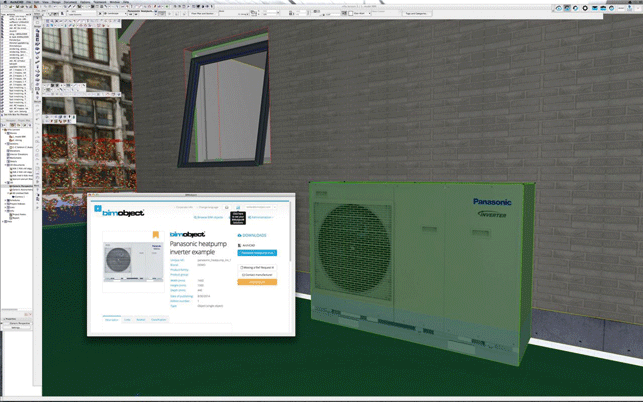
Quick component generation using BIMobject Mosquito
This isn’t a CAD technology swap-out. It’s a complete change of process for building design, right through to fabrication.
For manufacturers, there’s an opportunity here to take part in the design process at a much earlier stage. BIM uptake could change the way they work with supply chains and give them better insight into order pipelines. Potentially, they could gain access to detailed product specifications at the earliest design stages of projects.
But what’s the best way for them to take advantage of this trend? In order to answer that question, it’s necessary to take a brief look at older ways of doing things.
In the past, architects and specifiers have tended to work from libraries of product catalogues in order to identify the building components they need, along with product numbers and performance characteristics. With BIM systems such as Autodesk Revit, Bentley AECOsim and Nemetschek ArchiCAD, designers have had to create their own families of components to represent real-world design elements, such as doors, windows, fixtures, fittings and even white goods, which can take a lot of time.
It would therefore be better for everyone if all real-world manufactured components were available for inclusion in detailed BIM models at the design stage. This would save time for designers and give BIM-savvy manufacturers the advantage of early specification. It might also help to reduce on-site waste.
So what’s needed is a way for manufacturers to deliver BIM-ready digital content to their partners in the construction industry, not just for marketing purposes, but also for real competitive advantage.
A number of organisations will now provide, as a paid-for service, the modelling and distribution of digital versions of components on behalf of the manufacturing companies that create them. These include BIMstore, BIMobject and the NBS National BIM Library. Downloads, made via library websites, are free for designers, but are monitored, so that manufacturers can see information on the return on investment they’re getting from the service.
Alternatively, manufacturers can create their own digital content – but if they choose to take this route, they need to be aware that large component models are not good for BIM users. In fact, highly detailed components may even be shunned, in favour of simpler ones from rival manufacturers. In such cases, it may be that the geometry is not as important as the product information each model contains.
Either way, this approach has typically required manufacturers to invest in BIM software, such as Autodesk Revit, for example, in order to create compatible files for architects who use Revit – which is, after all, only one BIM system out of many used in Europe and the US.
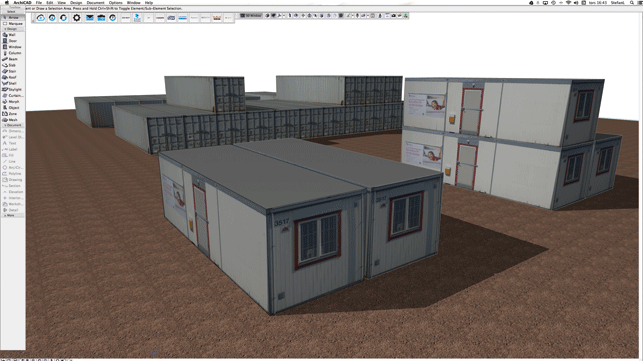
Portacabin component made with Mosquito
The BIMobject approach
In order to address these challenges, Swedish BIM component developer BIMobject has recently supplemented its existing modelling and distribution service with a new suite of tools to help manufacturers in the creation and distribution of multi-BIM format objects.
As discussed, BIMobject provides the service of modelling manufactured components in a wide range of common BIM formats and distributing them via a slick content management system (or CMS).
Manufacturers are provided with statistics, contacts and insights into how their models are downloaded and used. This gives them a good idea of up-and-coming projects in which their components may be used, as well as an indication of future orders. They can see when their products are removed from a design, or replaced by something else, which at least gives them an opportunity to leap in and try to cut a deal with a wavering customer.
Architects, meanwhile, can be sure that the object they’ve downloaded and used in their BIM model is the latest available. They’re provided with notifications of any model updates or, if a product is retired, information about the replacement component. Users of the BIMobject library report two main benefits: reliable and consistent model quality; and the ability to quiz manufacturers directly for technical information.
There’s one obvious drawback to this and it’s one that’s shared by all BIM component library services: the capacity to digitise vast catalogues of manufacturers’ components relies on a ready supply of talented BIM modellers, and frankly, there’s a real shortage of these.
That said, the logic follows that, if you could open up BIM component creation by offering more commonly used and understood design tools, the potential number of authors would increase dramatically. In addition, the BIMobject CMS could be packaged up for firms to manage and distribute their own created and managed content. This would enable BIMobject to address a much wider community, not just existing customers.
That’s the way that product developers at BIMobject have been thinking – and the net result is a combination of new authoring products and services that are designed to democratise component model creation, add intelligence and rules to the process and provide a managed distribution infrastructure. Here, we’ll take a look at what’s been introduced and at the potential uses of these product and services for component manufacturers.
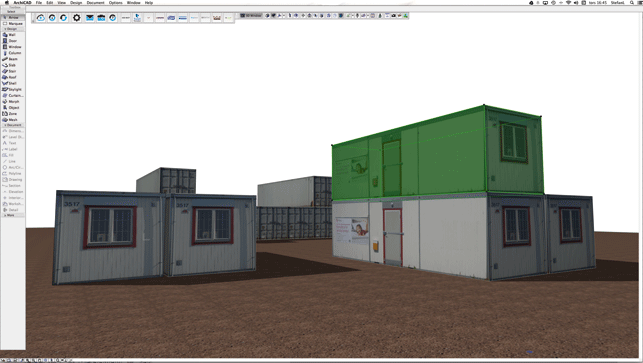
Once created, BIMobject content can be distributed, for insertion into BIM design systems
BIMscript
BIMscript is a subset of the C programming language. It is an open and free scripting and authoring language that can describe products and components with intelligence, creating configurable objects, calculations, product logic, level of detail (with several levels of complexity of geometry and geometry combinations), and includes a huge range of properties and attributes.
The script can output components in Autodesk, Graphisoft and Trimble formats, with more promised in the future. It also generates objects in commonly used formats such as IFC, 3DS, DWG and WebGL. This is a powerful open definition for the BIM community, which enables it to transcend the proprietary lock on BIM data.
The majority of manufactured AEC elements are designed in 3D CAD systems, which are integrated into fabrication systems. Typically manufacturers have 3D models for this purpose and these formats do not lend themselves for use in BIM modellers; they are too detailed and lack the relevant BIM product information.

BIMcloud provides an ecosystem for real-world BIM components
LENA
BIMobject has recognised that McNeel Associates’ Rhino modeller is low cost, popular and can open the majority of industry 3D CAD formats (Catia, SolidWorks, Solid Edge, IGES, NX, JT, Inventor and Pro/E). Using the Windows version as a platform, BIMobject has developed a plug-in tool called LENA to assist in the creation of BIM components.
LENA creates BIMscript from Rhino geometry. The interface is easy to use, for selecting required geometries, adding materials and so on. It includes all syntax controls, testing and creation of the generated BIMscript. The result is the creation of parametric and intelligent BIM objects from mechanical CAD data. These automatically connect to the BIMobject Cloud, providing a seamless workflow for publishing objects, with a connection to their corresponding product information, which is stored in property sets, also in the BIMobject Cloud.
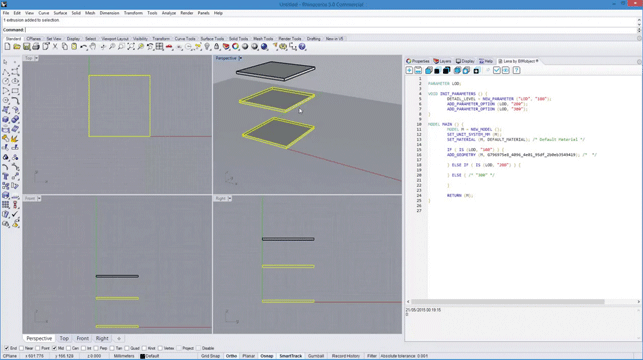
LENA and BIMscript enable Rhino to convert manufacturers’ CAD data into
Mosquito and BOPC
Both Mosquito and BOPC were launched in 2014, ahead of LENA and BIMscript, but these earlier introductions have important roles to play in BIMobject’s ambitions to democratise BIM component creation.
Mosquito, now in its second generation, enables BIM components to be created directly in the BIMobject Cloud platform and then published. In its first iteration, it could only create rectilinear geometry but this has been improved. Textures can be added and it supports bulk uploads from database or Excel-driven parameters. Mosquito is another potential way to speed up the mass population of a BIM cloud with product variants.
BOPC (BIMobject Open Property Cloud technology), pronounced ‘bops’, is a way to add extended properties to objects, such as parameters, metadata or attributes via the cloud and enable the addition of properties post-creation. Manufacturers or BIM firms can add additional visible properties to their objects or add hidden properties to objects in order to drive logistics and purchasing at a later stage in the process.
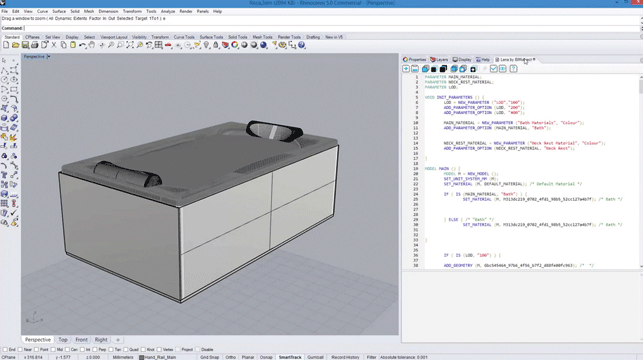
Creating a BIM component in Rhino using LENA and BIMscript
Hercules
BIMobject Hercules is the company’s cloud-based CMS, packaged up for larger contracting, construction, consultancy and architectural companies and offered on an annual subscription basis.
Hercules enables these customers to develop, publish and control their own BIM content in a cloud-based environment and integrates with Revit, ArchiCAD, SketchUp, Bentley AECOSIM (through the RVT format) and AutoCAD.
It provides a single source of content, with version handling, structured data, support for languages and various classification systems and comes with the complete suite of BIMobject Cloud Apps: Mosquito, BOPC and BIManalytics (Cloud traffic). It provides multiple ‘Project Clouds’ (on a private or public cloud basis), together with product administration capabilities. Existing manufactured components on BIMobject’s site can be integrated and made available on any Hercules set-up.
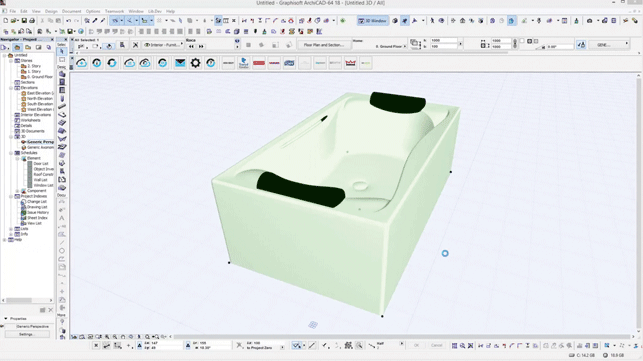
Finished bath component inserted into Autodesk Revit
In summary
Hercules is squarely aimed at very large organisations with thousands of families of parts to manage, but I hope that BIMobject comes up with a similar platform as a service (PaaS) offering that smaller architects might find usable and affordable.
BIMscript and LENA are the really ingenious elements here, opening up manufacturers’ 3D CAD files to speed BIM component creation. These two innovations admittedly help solve BIMobjects’ own bandwidth issues for content creation, but they also provide simple tools for turning high-quality, intelligent product geometry and data into the right BIM formats at lower cost.
There is an added benefit, in that these developments help Hercules customers generate their own content, in conjunction with Mosquito and BOPC.
But even with these tools, manufacturers may still not understand exactly what the AEC industry wants from BIM models. They’re still likely to over-detail models and make them too large or include too much product information.
At least in the BIM component delivery services industry, there is expertise on hand to advise manufacturers on the importance of exercising restraint and of not getting carried away. But now that BIMobject customers can make their own BIM components straight from pre-existing CAD data, the danger is that they produce a lot of content that is too big to be of use.
On the whole, that may still be better than having no models at all. Geometry, after all, can always be optimised.
bimobject.com
Introducing BIM4M2
To assist manufacturers looking to participate in the BIM revolution, the Construction Products Association (CPA) has set up a working group called BIM4M2.
This forum supports the government’s BIM Task Group’s aims for manufacturers, by sharing knowledge, experience and advice with members. The website also offers a ‘compass tool’, which looks at how BIM is likely to impact participants’ businesses and provides supporting information to aid decisions on adopting BIM across a number of market sectors.
bim4m2.co.uk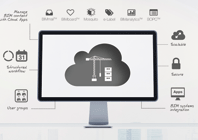
Software enabling manufacturers to present BIM-ready digital content to their customers
Default






